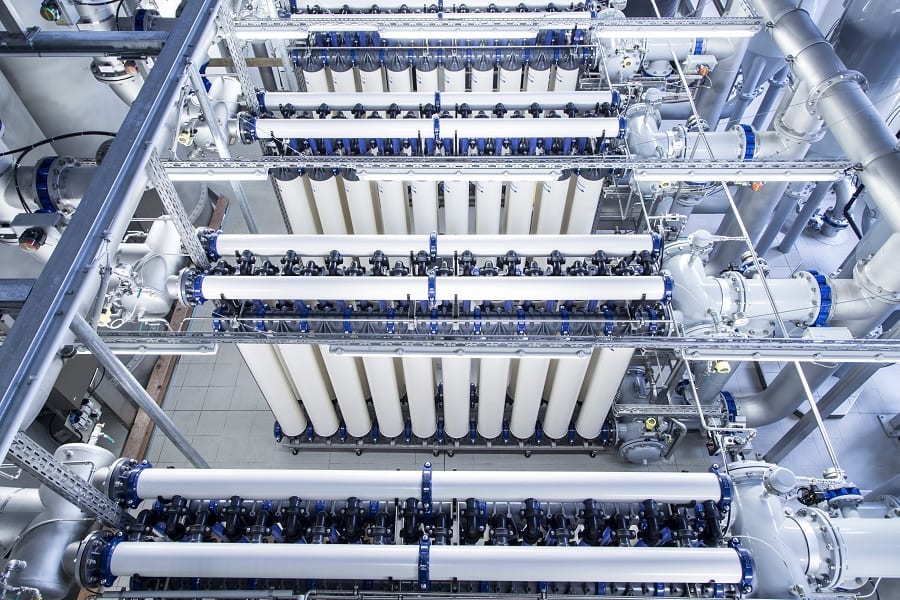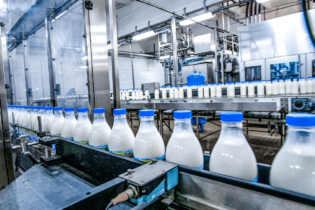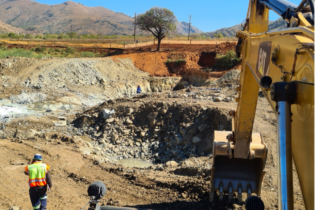 Aqua Resources SA MD Susan Cole has been a leading light in the South African water industry for more than two decades. In support of National Water Week, she provides her insights on how to improve Southern Africa’s water supply sustainability.
Aqua Resources SA MD Susan Cole has been a leading light in the South African water industry for more than two decades. In support of National Water Week, she provides her insights on how to improve Southern Africa’s water supply sustainability.
What are the most effective solutions – technological and otherwise – for ensuring that all people have adequate access to clean water sources?
SC: Water is not only vital for our survival as human beings, but is also used in almost all industrial processes. Natural water resources are under constant strain, and population growth and industrialisation are exacerbating the trend. Moreover, these increasingly scarce water resources are becoming more polluted.
Effectively treating our inland water supplies using conventional solutions is becoming more challenging as they are becoming progressively more saline and eutrophic. Greater attention needs to be paid to recycling wastewater from industrial and mining operations. This would reduce the volume of wastewater reaching rivers and dams, and potable water previously consumed by such industries could be used elsewhere – thereby expanding the access to clean water. Industrial water users would become self-sufficient and the environmental impact of waste would be reduced or eliminated.
Water treatment technologies such as ultrafiltration (UF) and reverse osmosis (RO) have demonstrated that they are effective methods of treating and recycling waste and industrial waters.
Regional success stories include the Emalahleni Wastewater Reclamation Plant treating acid mine drainage water to potable standards. The Cape-based plant treats final effluent from a municipal sewage treatment works for use
as process water at an industrial
site, functioning as a direct reuse
plant providing a nearby town with potable supply.
If we could replicate these successes elsewhere, we could multiply the positive effects. Recycling and reuse of water needs to be promoted as a viable solution to our region’s water scarcity.
How would you characterise the relationship between governance and technology when it comes to sustaining water supply security?
SC: The World Bank defines governance as including aspects of:
- Participation of citizens in political processes, freedom of expression and association, free media
- Political stability and the absence
of violence
- Government effectiveness in the delivery of services
- Regulatory quality, rule of law
- Control of corruption.
Technology is key in developing an economy. The development of new products and services starts with technology. Applying technology meets needs, which, in turn, enable momentum across other sectors of an economy.
Most technological innovation comes from the private sector. By combining the efforts of government and the private sector in seeking water supply security, we can ensure we have enough water to sustain economic growth going forward. Public-private partnerships are a sound way of ensuring cooperation and water supply security for all.
What are the main sectors that find desalination technologies like UF and RO appropriate for their needs and why?
SC: Sectors that find UF and RO technologies appropriate include the municipal (water and sewage treatment), industrial (including mining), wastewater reuse, food and beverage, and residential point-of-use sectors. As both technologies address the removal of different types of contaminants, they act in conjunction to solve the clean-
water challenge.
What partnerships has Aqua Resources SA developed to supply its clients with a total, affordable water treatment solution?
SC: Aqua Resources SA distributes the trademarked inge GmbH ultrafiltration range & LG Water Solutions’ RO membranes in sub-Saharan Africa.
Both manufacturers supply high-
quality, cost-effective solutions for various water treatment challenges including wastewater recycling, reuse and desalination.
What are some of the most popular solutions for the South African market and why?
SC: The South African market is transitioning from conventional treatment solutions to more ‘hi-tech’ treatment options.
Hi-tech technologies are sometimes perceived as more expensive but there is ongoing research focusing on finding ways to improve efficiency and reduce energy consumption in these types of treatment plants.
UF removes suspended solids, bacteria and viruses while RO removes dissolved salts. This makes them the ideal technologies for:
-
production of potable and process water from surface, well and spring water
-
sea water desalination using RO with UF as pretreatment
- treatment and reuse of wastewater
What puts the technologies you supply ahead of similar market offerings?
SC: When it comes to UF, the inge ultrafiltration range with its patented multibore membrane technology combines seven individual capillaries in one highly robust fibre. This significantly increases membrane stability and virtually eliminates the risk of fibre breakage. The membrane provides a secure barrier against suspended solids and microorganisms while delivering a consistently high level of filtrate quality regardless of fluctuations in the quality of the feed water.
inge technology also offers significant advantages over conventional water treatment methods, such as rapid and easy module installation and stable, highly resilient membranes. This makes planning a water treatment facility much simpler, enabling customers to achieve low-cost installation and operation along with a guarantee of long-lasting reliability.
As for our RO offering, LG Water Solutions manufactures the range of NanoH20 RO membranes. Encapsulation of benign nanoparticles changes the structure of the thin-film surface of a conventional RO membrane, allowing more water to pass through while rejecting unwanted materials such as salt. It is this thin film that dictates the permeability and salt rejection of the membrane and, therefore, the economics of a desalination plant.
LG Chem’s thin-film nanocomposite membranes have demonstrated a 50% to 100% increase in permeability when compared to the installed base of RO membranes.
This increased permeability means less pressure is required to force the migration of fresh water through the membrane, thus lowering a desalination plants energy costs.
 Aqua Resources SA MD Susan Cole has been a leading light in the South African water industry for more than two decades. In support of National Water Week, she provides her insights on how to improve Southern Africa’s water supply sustainability.
Aqua Resources SA MD Susan Cole has been a leading light in the South African water industry for more than two decades. In support of National Water Week, she provides her insights on how to improve Southern Africa’s water supply sustainability.







